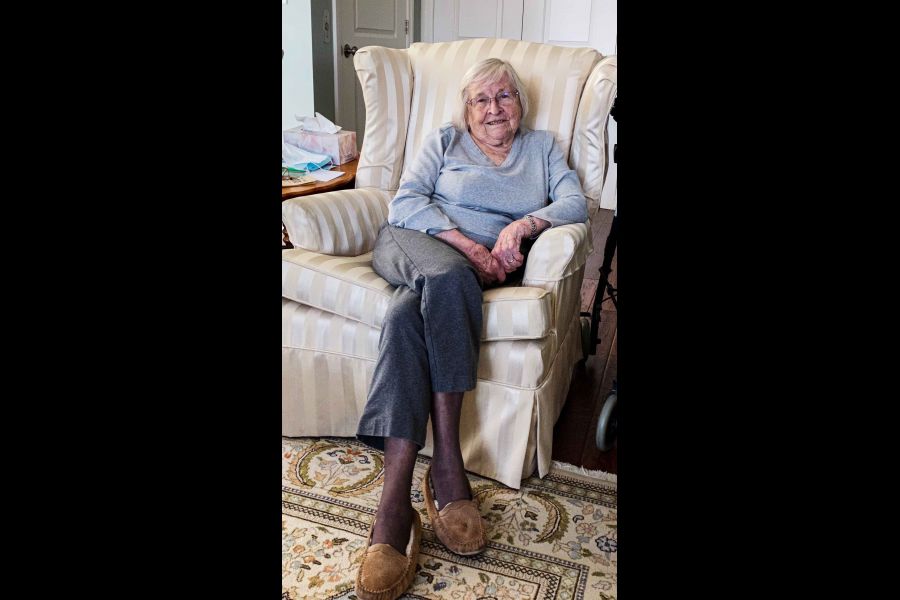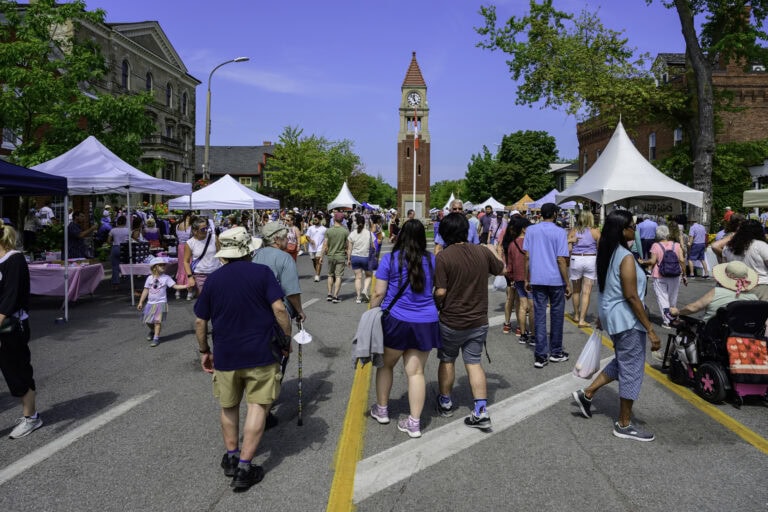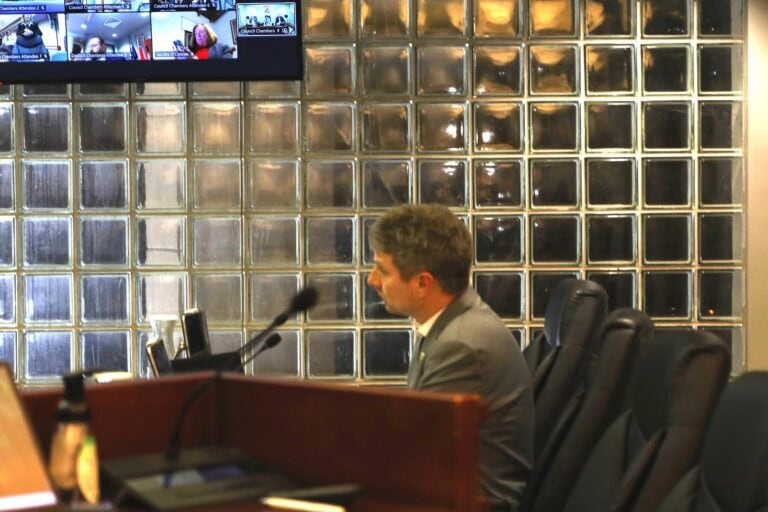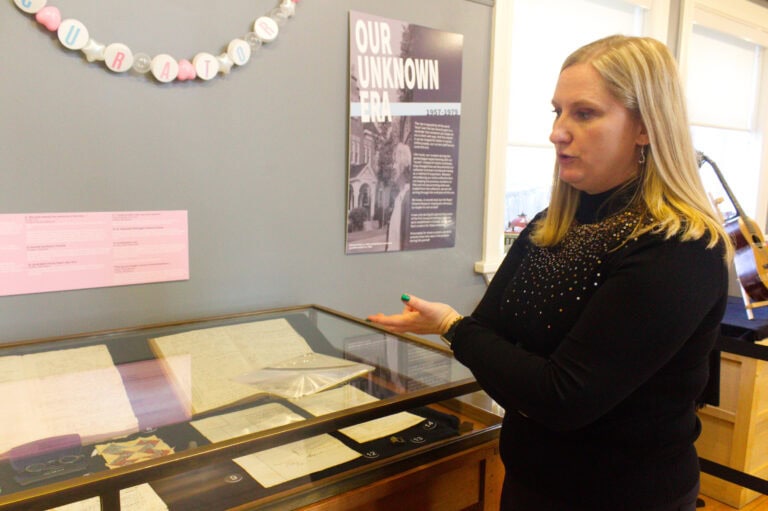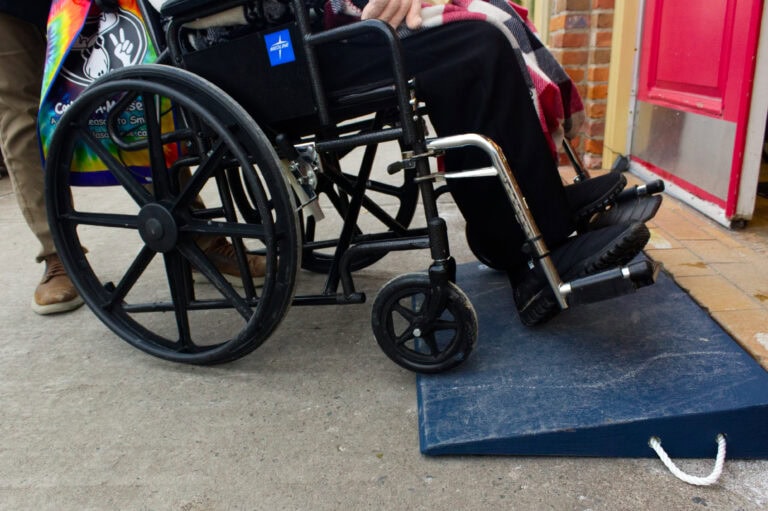Gail Kendall
Special to The Lake Report
Hope Bradley remembers a simpler time for Niagara-on-the-Lake, when dignitaries would arrive by helicopter at the Rand Estate, Simcoe Park hosted dances, and when everyone knew their neighbours — and had neighbours instead of short-term rentals.
Now Bradley, 94, fears development is quickly changing the landscape of Canada's “prettiest” town.
Talking with her at her home, she pushes past the multitude of historical facts about NOTL that have been documented for all to read, and offers a more personal account of her own experiences.
Born on March 11, 1927, in the Cottage Hospital on the main street in town, at her age she can still rhyme off names and dates like they were yesterday.
She and her husband Allen raised seven children, who all continue to live close to town. A close-knit family with 12 grandchildren and 13 great-grandchildren (and another due at the end of May), Bradley laughs that Christmas can be expensive.
Asked what the biggest change to the area is, she immediately answers: development. She remembers when Niagara-on-the-Lake was mostly fields and orchards.
Now, NOTL is filled with homes and Niagara Stone Road is the busiest she has ever seen it.
She mentions that the town was always a tourist area, especially during the war. But not like it is today.
“When I was young, NOTL was more community-focused, with families and schools in the Old Town. Queen Street catered more to the locals, with places like Harrison’s hardware store and a lumberyard where the post office is now. McClelland, the butcher, was directly across the street and at night you could fire a cannon down Queen Street and not hit a soul.”
Her father, James Elliot, ran the dance hall in Simcoe Park and her mother, Isabel, known to everyone as Daisy, provided the refreshments — ice cream, pop, hot water for tea — and became known for her burgers. Bradley would help her mother serve.
On Wednesday nights, patrons danced to a jukebox but on Saturday nights, the Bud Allen Orchestra from Thorold provided the dance tunes. Sunday nights saw a popular sing-song run by the choir master of St. Andrew's Presbyterian Church. Bradley says people would come from miles away to join in.
When Bradley was a teenager, she remembers a boom in Mennonites coming to NOTL. She was fascinated then as she is now about how hard they work but more about how they would always help each other out.
Married in 1946 right after the war, Bradley and her husband built their first house on Queen Street, beside where the post office stands today. They and their five children soon outgrew the home and moved to an apartment across from the clock tower.
More children meant many moves around town.
Bradley worked various jobs in town, including helping to open Chateau Gardens long-term care home on Wellington Street when she was 25. She served as the activities director until she injured herself lifting a patient, resulting in a nine-month hospital stay in Toronto.
She also worked as secretary to a couple of businesses in Toronto where she lived temporarily, but would often commute by the Cayuga ferry across Lake Ontario.
She always found her way back home to NOTL. From running a florist shop along Queen Street with a friend to becoming a founding member of the Shaw Guild, Bradley certainly had an extensive resume.
Old friend Calvin Rand, who co-founded the Shaw Festival with lawyer Brian Doherty in 1962, called on Bradley to help out in its early stages.
The only theatre used at the time was the Court House on Queen Street. Bradley would arrange to borrow furniture from residents for the plays, would help sew costumes and would literally be on hands and knees hours before the shows scrubbing the floors.
Bradley worked as a receptionist for the Shaw Festival from 1971 to 1986 under five artistic directors, beginning with Paxton Whitehead.
She left the Guild when it was suggested that a larger theatre be built behind the Court House or where the golf course is now, due to the fact she did not want to see the area overrun with parking problems and multitudes of tourists.
She has memories of dignitaries attending the Shaw Festival. She recalls the time Queen Elizabeth and Pierre Trudeau attended the theatre, along with Indira Gandhi, who arrived via helicopter, landing on the former estate of Trisha Romance.
As for what she misses most, “It’s not knowing who my neighbours are. We used to be a town of year-round neighbours. Now many homes are either owned by Americans who are rarely here or snowbirds who leave for the winter.”
She add, “Some homes are not maintained, with papers piling up, and short-term rentals like Airbnbs cause problems by renting to large groups who disturb the neighbourhood with loud, all-night parties.”
Bradley closes with a final thought: “I really miss the small town feel, knowing your neighbours and knowing they would always be there.”



